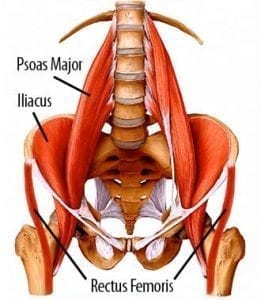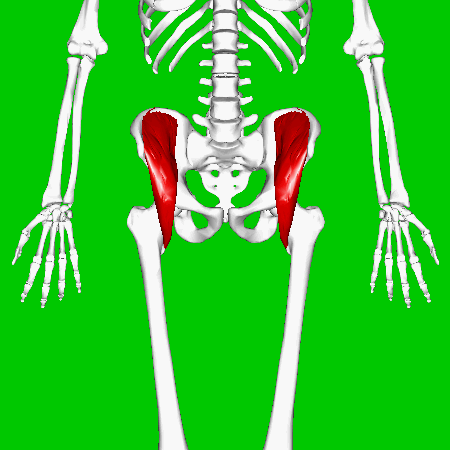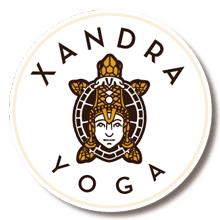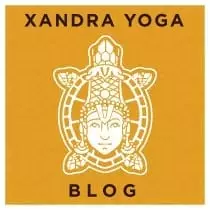As an Ashtangi practitioner the « jump back » and/or « jump front » can quickly become alienating. Some practitioners can do it easily, others might struggle for a long time (like me).
It is all about the hips flexor. 
The psoas muscle connected from the T12 to all five lumbar vertebrae, it is the one who connects the spine to the legs.
The illiacus inserted to the trochanter of the femur bone. The rectus femoris also connects the pelvis to the femur bone. The rectus femoris is going down to the patella as well therefore a knee pain is often associated to a lack of hips opening.

The Rectus Abdominis is also a hip flexor as it helps stabilising the torso during the flexion.
When we start jumping back from a sitting pose the first thing that teacher says is « bring your knees to your chest than lift ». This action can not take place if the hips flexor are not strong enough. What might result is that instead of working from the center of the body we tend to press more the hands onto the floor and the motion is only happening because the upper body is stronger. That is one of the reason for men jumping back and jumping front is much easier. Men can be really stiff but they can jump forward without any issue.
Actually the motion has to take place from both part of the body, the upper body and the lower part, it is a common action. If we start combining both forces pranic and apanic then there will be a flow motion, without any pain and struggle.
When you watch a video sometimes you have the impression that the Ashtangi demonstrating is just floating over the yoga mat. It can very frustrating (jealousy) but to reach that level it takes a lot of practice and understanding of the movement.
If we start practicing with the sense of both opposition, Pranic and Apanic forces then result will start showing. When we are bringing the knees to the chest there is « lock » happening, a Bandha, we are first of all closing Kati Bandha (hip joint) by the action of Mula Bandha.
Uddiyana Bandha will be automatically engaged by the action of Janu Bandha (knee joint) because keeping the knees up to the chest requires to squeeze a lot the knees against each others by keeping the heels toward the sit bone. It is not just crossing the legs, it is more « crossing and pressing ».
When the jump back happens the exhalation are releasing the Bandhas and at the same time is giving all power to the motion, because if the exhalation does not happen then we can’t really jump back. By releasing the Bandhas through the exhalation the apanic and pranic energy are circulating freely in the body.
There was one post I have read on Facebook in which someone was writing that the practice of the Ashtanga yoga was too fast in order to work and feel the Bandhas….. this person was so wrong and had absolutely no clue of what he was talking about.
Bandhas are almost everywhere (for each joints) in our body. Without them we won’t be able to practice safely. As the concept is slightly difficult to understand in order to bring the awareness to them we can apply some documented anatomy.
But instead of seeing only the « anatomy of the movement » and being stuck into that pattern, as a practitioner we should be able to see above it and to connect it with the energy floating freely in our body.
Only then we start practicing Y.O.G.A. in its entirety instead of considering it as a single physical exercice.
Have a Good Practice! Namaste, Wants to know more? Please joins us for our Vinyasa Yoga Teacher Training Course in Bali on April 2018 and/or Hatha Yoga Teacher Training Course in Paris on August 2018. Information click here!


